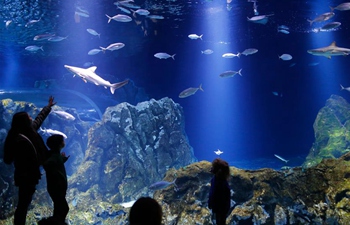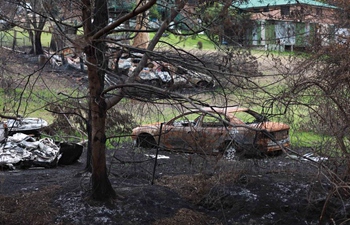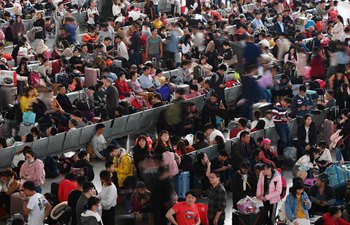WASHINGTON, Jan. 19 (Xinhua) -- SpaceX's Crew Dragon conducted an escape test on Sunday to demonstrate its ability in future missions to lift astronauts out of danger in event of an emergency on rocket ascent.
At 10:30 a.m. U.S. Eastern Time (1530 GMT), a Falcon-9 rocket, carrying the Crew Dragon and two dummies, was launched from Launch Complex 39A at NASA's Kennedy Space Center in Florida, showed U.S. space agency NASA's live broadcast.
About one and a half minutes after the liftoff, Falcon 9's first stage engines shut down and Crew Dragon's SuperDraco thrusters fired to trigger a launch escape, catapulting the vehicle away from the rocket which then broke up offshore over the Atlantic Ocean.
Then, eight SuperDraco engines shut down, allowing the spacecraft to coast to the highest point in its arc when the capsule jettisoned its trunk section for a reentry.
Nearly five minutes after the liftoff, the capsule's two drogue and four main parachutes were deployed. The capsule splashed down into the Atlantic Ocean nine minutes after the liftoff. The recovery team is now recovering the capsule and the rocket debris, according to NASA.
SpaceX's in-flight demonstration of launch escape capabilities is designed to provide valuable data toward NASA certifying the spacecraft to begin carrying astronauts to and from the International Space Station (ISS).
NASA contracted with SpaceX and Boeing to build U.S.-made crewed capsules to bring U.S. astronauts to the ISS, in order to end its reliance on Russian Soyuz spacecraft for crew transportation.
Crew Dragon completed its unmanned test flight last March while Boeing's Starliner went out of its planned orbit after separation with the rocket last December, resulting in a cut-short unmanned mission.
The inaugural Crew Dragon astronaut launch is expected to happen as early as the first quarter this year.

















